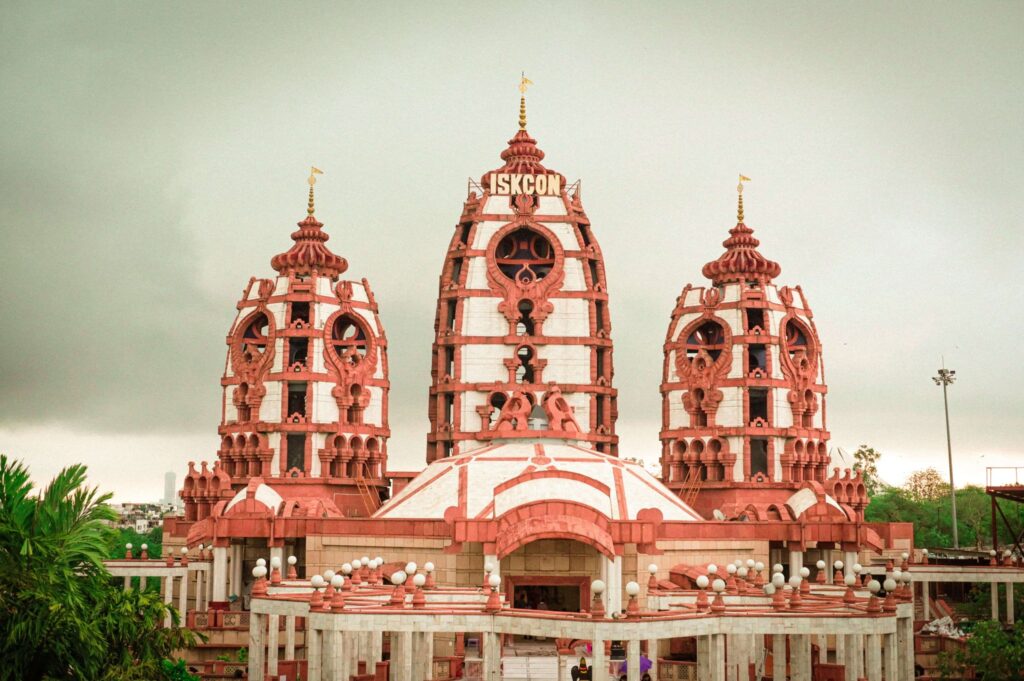:max_bytes(150000):strip_icc()/GettyImages-185733537-5b51446046e0fb00378bc660.jpg)
The Lotus Temple, located in Delhi, India, is a remarkable architectural gem with immense cultural and spiritual significance. Resembling the shape of a lotus flower, this iconic structure symbolizes unity and openness. This article will delve into the history, architectural design, symbolism, and various aspects of the Lotus Temple that make it a must-visit destination.
Delhi Contents
History of the Lotus Temple
The Lotus Temple, also known as the Bahá’í House of Worship, was completed in 1986. It serves as the Mother Temple of the Indian subcontinent for the Bahá’í Faith, a religion that advocates the unity of all religions and the harmony between science and spirituality. The Lotus Temple stands as a symbol of this unity and welcomes people from all faiths and backgrounds.
Architectural Design and Significance
Designed by the talented Iranian architect Fariborz Sahba, the Lotus Temple is an architectural marvel. It features 27 marble-clad “petals” arranged in three clusters, forming nine sides. The exterior of the temple, crafted from pristine white marble, exudes a sense of purity and tranquility. Its unique shape and symmetrical design make it an exceptional example of modern architecture.
Symbolism and Spiritual Significance
The lotus flower holds profound symbolism in many cultures, representing purity, beauty, and divinity. The Lotus Temple’s design embodies these qualities, creating an atmosphere of serenity and inner peace. Inside the temple, you will find a vast prayer hall free of religious symbols or idols. Visitors are encouraged to engage in meditation, prayer, or solace in the tranquil ambiance.
Visiting the Lotus Temple
The Lotus Temple welcomes visitors from all walks of life, regardless of their faith or beliefs. As you approach the temple, you will be captivated by the expansive gardens surrounding the structure, adding to the sense of serenity. Upon entering, a profound silence envelops the space, allowing visitors to reflect and find solace in the tranquil environment. Photography and cell phone use are prohibited inside to maintain the sanctity of the space.
Promoting Interfaith Harmony
Central to the philosophy of the Lotus Temple is promoting interfaith harmony and unity. It serves as a platform for people of diverse religions to unite and engage in dialogue, fostering understanding and cooperation. The temple hosts various events and programs that celebrate diversity and encourage mutual respect among individuals of all backgrounds.
Role in Community Engagement
Beyond its spiritual significance, the Lotus Temple engages with the local community. It plays a vital role in providing educational programs, vocational training, and social welfare initiatives to uplift the underprivileged. Through its philanthropic efforts, the temple has positively impacted the lives of many, embodying the principles of compassion and service.
Impact on Tourism and Cultural Exchange
The Lotus Temple has become an iconic tourist attraction, drawing millions of visitors worldwide. Its unique architectural design and serene ambiance make it a destination for those seeking spiritual solace and marveling at architectural brilliance. The temple has also emerged as a symbol of India’s rich cultural heritage, promoting cultural exchange and fostering cross-cultural understanding.
Recognition and Awards
Over the years, the Lotus Temple has received numerous accolades for its architectural excellence and societal contributions. It has been recognized globally for its unique design and role in promoting interfaith harmony and cultural exchange. The temple stands as a testament to the power of architecture to inspire and unite people from diverse backgrounds.
Conclusion
The Lotus Temple is an architectural marvel and symbol of unity and inclusivity. Its mesmerizing design, profound symbolism, and commitment to interfaith harmony make it a beacon of peace and tranquility. Whether you seek spiritual enlightenment, architectural inspiration, or a moment of serenity, the Lotus Temple offers a profound experience that transcends boundaries.
Read More Related blogs
- Connaught Place Central Park: A Melting Pot of History and Recreation
- Chokhi Dhani Noida – Spend Hours & Get Unlimited Food
- Best Delhi Places To Visit in 2023 Tourist Places
- Where To Stay In Delhi India For Free 2023
- Visiting Places Near Delhi in 2023 Best Tourist Places
- 5 Best Couples Places In Delhi 2023 Know Romantic Places In Delhi
FAQs
1. Is the Lotus Temple open to people of all faiths?
Yes, the Lotus Temple welcomes individuals of all faiths and beliefs.
2. Are there any restrictions on photography inside the temple?
Yes, photography and cell phone use are prohibited inside the Lotus Temple.
3. Does the Lotus Temple offer any educational programs?
Yes, the Lotus Temple provides educational programs, vocational training, and social welfare initiatives to the underprivileged.
4. What is the significance of the lotus flower in the temple’s design?
The lotus flower represents purity, beauty, and divinity in many cultures, symbolizing the temple’s spiritual significance.
5. Has the Lotus Temple received any awards for its architecture?
Yes, the Lotus Temple has received recognition and awards for its unique architectural design and contributions to society.


